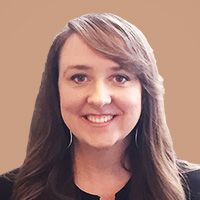Tighter Rules on Reverse Mortgages
Borrowers face higher costs and lower loan amounts. And soon borrowers will have to pass a financial assessment, too.

Seniors shopping for a reverse mortgage will find the rules for these loan products are getting tighter. That means borrowing costs are increasing and loan amounts are shrinking. And some cash-strapped people may find it tougher to qualify for a loan.
One major change: the merger of the Standard and the lower-cost Saver programs. On October 1, the Department of Housing and Urban Development combined these products. Borrowers will now receive about 15% less in proceeds compared with the Standard product, but they will get more than with the Saver, says Peter Bell, president of the National Reverse Mortgage Lenders Association.
The merged product charges 0.5% for an upfront mortgage insurance premium, compared with the Saver's 0.01% and the Standard's 2%. However, some seniors may get hit with a higher 2.5% upfront premium if they take more than 60% of the proceeds during the loan's first year. "If you're above the 60% threshold, you can still get the loan, but it will cost a little bit more," says Gregg Smith, president of One Reverse Mortgage. The annual premium of 1.25% of the loan amount remains the same.
From just $107.88 $24.99 for Kiplinger Personal Finance
Become a smarter, better informed investor. Subscribe from just $107.88 $24.99, plus get up to 4 Special Issues

Sign up for Kiplinger’s Free Newsletters
Profit and prosper with the best of expert advice on investing, taxes, retirement, personal finance and more - straight to your e-mail.
Profit and prosper with the best of expert advice - straight to your e-mail.
A reverse mortgage allows seniors 62 or older to tap their home equity. The loan does not have to be repaid until the homeowner dies, sells the house or moves out for at least 12 months.
Nearly all reverse mortgages are insured by the Federal Housing Administration. With the Home Equity Conversion Mortgage, or HECM, the government pays the lender if the house sells for less than the loan's balance. When the loan comes due, the homeowner will never owe more than what the home is worth.
HUD made these changes to strengthen the mortgage insurance fund, which suffered from a struggling housing market and a growing number of defaults by borrowers. As housing prices dropped, lenders often could not recoup the full amount of the loans when they came due. "The changes were made to ensure the program is open for business tomorrow," Smith says. HUD also has asked Congress for about $1.7 billion to shore up the fund.
One new rule limits the proceeds a borrower can take within a year of the loan closing. "Before, you could take 100% of the available proceeds on day one," says Lori Trawinski, senior strategic policy adviser for the AARP Public Policy Institute. Now, in the first year, the borrower can generally take no more than 60% of the total proceeds he's eligible to receive. A reason for the new limit: Borrowers taking all proceeds upfront were more likely to use up the money early on. Often those borrowers were left without enough cash later on to pay property taxes and homeowners insurance, and the loans went into default. "HUD has learned that loans with a larger upfront draw have more risks," Bell says.
There is an exception to the 60% limit. The borrower can take more in the first year if the amount of "mandatory obligations" plus 10% of the maximum allowable proceeds is larger than 60% of the proceeds. Mandatory obligations include the upfront insurance premium, the loan origination fee and money needed to pay off a regular mortgage. Borrowers who take more than 60% will pay the higher upfront insurance premium of 2.5%.
Say a borrower with a home value of $200,000 qualifies for a $100,000 loan. The first-year draw is $60,000. If the borrower has mandatory obligations of $20,000, the proceeds will cover those costs, and he can take the $40,000 balance in cash in the first year. He will pay an upfront premium of $1,000, or 0.5% of the home value.
If his mandatory obligations are instead $70,000, the borrower can draw up to $80,000—the $70,000 to cover the mandatory obligations plus 10% of the total loan, which is $10,000. This borrower will pay an upfront premium of 2.5%, or $5,000. Generally borrowers who go this route are paying off a forward mortgage, Smith says.
Borrowers can take proceeds as a line of credit or monthly payments, and they will pay an adjustable interest rate. After the first year, the borrower can take the balance of available proceeds.
Those who want a fixed interest rate can take a lump sum payment at closing. But the one-time lump sum is subject to the 60% and mandatory obligations limitations. "You can't come back for more," Bell says. If you qualify to take up to 60% in proceeds the first year, that's all you'll get.
New Hurdles to Qualify
For the first time, potential borrowers will need to undergo a financial assessment to determine whether they can to afford to pay property taxes and homeowners insurance over the life of the loan. The assessments will begin January 13, 2014.
About 57,600 borrowers, or 9.8%, defaulted because of taxes and insurance in mid 2012, up from 8.1% in mid 2011, according to HUD. A borrower goes into default when he does not pay property taxes and insurance—a requirement of the loan. AARP's Trawinski says such costs can be a hardship for homeowners particularly in states, such as New York, that have hefty property taxes, or in coastal states, such as Florida, with expensive insurance costs because of hurricane and flooding risks. A borrower in default is given 24 months to get current on unpaid charges, and if he can't, he could lose his home if the lender forecloses.
Bell says lenders will scrutinize sources of income and assets as well as credit history. Some borrowers will be required to set aside part of the loan into an escrow account to pay future bills. Borrowers who clearly are able to cover those costs won’t have to put cash aside.
Because the set-aside may need to last for 20 years or more, the amount could be very large. For some, the proceeds may end up paying only loan expenses, taxes and insurance—but covering those costs could enable the senior to stay in the home. And it would free up cash in a retiree's budget to pay for other expenses, says Michael Kitces, director of research at Pinnacle Advisory Group, in Columbia, Md.
A senior could be denied a reverse mortgage if the financial assessment finds that the senior cannot pay insurance and taxes and have enough cash left to live on. Seniors who are strapped for cash may be cut out of the reverse mortgage market, says Trawinski.
Affluent borrowers are likely to pass the financial assessment, but many may see little appeal in a reverse mortgage now that the Saver has been eliminated. Because the Saver had ultra-low costs, some borrowers used it to extend the life of their investment portfolio by tapping the credit line during a market downturn, giving their stocks time to recover. "Spending a few more thousand dollars upfront isn't a deal killer, but it takes a little value off the strategy," Kitces says.
Haven't yet filed for Social Security? Create a personalized strategy to maximize your lifetime income from Social Security. Order Kiplinger’s Social Security Solutions today.
Profit and prosper with the best of Kiplinger's advice on investing, taxes, retirement, personal finance and much more. Delivered daily. Enter your email in the box and click Sign Me Up.

-
 Your Guide to Buying Art Online
Your Guide to Buying Art OnlineFrom virtual galleries to social media platforms, the internet offers plenty of places to shop for paintings, sculptures and other artwork without breaking the bank.
-
 Samsung Galaxy S25 Ultra for $4.99 a Month: A Closer Look at Verizon’s Deal
Samsung Galaxy S25 Ultra for $4.99 a Month: A Closer Look at Verizon’s DealVerizon’s aggressive pricing makes Samsung’s top-tier phone tempting, but the real cost depends on your plan and how long you stay.
-
 I'm 59 with $1.7 million saved and lost my job. Should I retire?
I'm 59 with $1.7 million saved and lost my job. Should I retire?We asked professional wealth planners for advice.
-
 9 Types of Insurance You Probably Don't Need
9 Types of Insurance You Probably Don't NeedFinancial Planning If you're paying for these types of insurance, you may be wasting your money. Here's what you need to know.
-
 Amazon Resale: Where Amazon Prime Returns Become Your Online Bargains
Amazon Resale: Where Amazon Prime Returns Become Your Online BargainsFeature Amazon Resale products may have some imperfections, but that often leads to wildly discounted prices.
-
 457 Plan Contribution Limits for 2026
457 Plan Contribution Limits for 2026Retirement plans There are higher 457 plan contribution limits in 2026. That's good news for state and local government employees.
-
 Medicare Basics: 12 Things You Need to Know
Medicare Basics: 12 Things You Need to KnowMedicare There's Medicare Part A, Part B, Part D, Medigap plans, Medicare Advantage plans and so on. We sort out the confusion about signing up for Medicare — and much more.
-
 The Seven Worst Assets to Leave Your Kids or Grandkids
The Seven Worst Assets to Leave Your Kids or Grandkidsinheritance Leaving these assets to your loved ones may be more trouble than it’s worth. Here's how to avoid adding to their grief after you're gone.
-
 SEP IRA Contribution Limits for 2026
SEP IRA Contribution Limits for 2026SEP IRA A good option for small business owners, SEP IRAs allow individual annual contributions of as much as $70,000 in 2025, and up to $72,000 in 2026.
-
 Roth IRA Contribution Limits for 2026
Roth IRA Contribution Limits for 2026Roth IRAs Roth IRAs allow you to save for retirement with after-tax dollars while you're working, and then withdraw those contributions and earnings tax-free when you retire. Here's a look at 2026 limits and income-based phaseouts.
-
 SIMPLE IRA Contribution Limits for 2026
SIMPLE IRA Contribution Limits for 2026simple IRA For 2026, the SIMPLE IRA contribution limit rises to $17,000, with a $4,000 catch-up for those 50 and over, totaling $21,000.